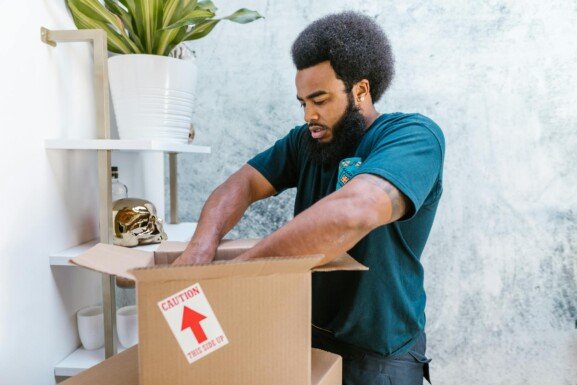How to Manage Your Korean Bank Accounts When Moving Abroad
I decided to leave Korea and start a new life abroad. The excitement felt real, but the stress about money hit me even harder. I packed my bags, sold my furniture, and said goodbye to friends—but handling my Korean bank accounts gave me the biggest headache. I refused to risk waking up in another country, logging into my account, and discovering I was locked out because of a technical detail I had overlooked. So, before I left, I prepared carefully. Now, I’ll walk you through exactly what I did, what I wish I had known earlier, and the small steps that saved me from a lot of stress later.

Telling My Bank I Was Moving
The first thing I did was let my bank know I was leaving Korea. I had accounts with KEB Hana and Shinhan, and I learned quickly that if you don’t tell them you’re moving abroad, they can freeze things or block certain transactions.
I walked into my local branch, told them I was relocating, and they handed me a list of expat services. The bank offered lower transfer fees, support for setting up overseas wire transfers, and even a dedicated team to assist clients living abroad.
What I made sure to do before leaving:
- Updated my mailing address to one overseas.
- Gave them my new phone number so I could still get alerts.
- Asked if my account had any limitations once I left Korea.
Doing this before the move saved me. Otherwise, I’d have been scrambling later, sending emails across time zones and hoping someone picked up the phone.
Getting Online and Mobile Banking Sorted

If you don’t set up internet or mobile banking before you leave, you’re going to regret it. Korean banks are strict with security, and some things require in-person verification.
I downloaded Hana OneQ and Shinhan SOL on my phone while I was still in Korea. I linked my overseas number, set up email verification, and enabled two-factor authentication through Google Authenticator. At first, the process felt like an unnecessary hassle, but I knew that even a small mistake could leave me locked out of my own money. Taking the time to secure everything before leaving gave me peace of mind once I was abroad.
Once I was abroad, these apps became lifesavers. I could:
- Transfer money between accounts in seconds.
- Pay off bills I forgot to cancel.
- Keep an eye on every transaction so nothing slipped through.
Without those apps, I’d have been stuck. Having them made it far easier to manage Korean bank accounts remotely.
Setting Up International Transfers
I knew I’d need to move money from Korea to my new country, so I set up international wire transfer services before I left. The catch is—you usually need to do this in person.
I went into my branch, registered the foreign account details, and collected the SWIFT code for my Korean bank. Once everything was registered, I could send money overseas directly from my app.
But here’s the thing: bank fees are not cheap. That’s why I also compared services like Wise and Revolut. Nine times out of ten, those services gave me better rates. Still, it was good to have the official bank option in place as a backup.
Keeping My Korean Number Alive
One mistake a lot of people make is canceling their Korean phone number before leaving. Don’t do that. Banks in Korea love sending OTP (One-Time Passwords) by text, and if you don’t have that number anymore, good luck logging in.
What I did:
- Switched my plan to the cheapest international roaming plan.
- Looked into virtual Korean numbers, just in case.
- Kept my old SIM card as a backup.
This one step saved me so much stress. I can’t count how many times I got a code texted to my Korean number while I was abroad. Without it, I would’ve been locked out.
Using Korean Credit Cards Abroad
I had a Korean credit card, and while it worked abroad, I quickly realized the fees could add up fast. Some cards charge international transaction fees, and exchange rates weren’t always kind.
Before I left, I called my card provider and told them I was moving. That way, I wouldn’t get flagged for suspicious transactions. I also asked them straight up: what’s the international transaction fee?
Some months, the fees stung. If you’re planning long-term, it’s worth considering a local credit card in the country you’re moving to, or at least a Korean card with lower overseas charges.
Taxes Don’t Disappear When You Leave
This part surprised me. I thought leaving Korea meant I was done with Korean taxes. Not true. Depending on your situation, you might need to report income abroad to the Korean tax office.
I also learned that some countries have strict rules, like the U.S. with FATCA, which requires you to declare foreign accounts.
The smartest thing I did was talk to a tax consultant who knew both Korean and international tax law. It cost me money, but it saved me from possible penalties down the line.
Avoiding Account Fees
Something small but important: Korean banks charge maintenance fees if you don’t keep a minimum balance. I didn’t want to lose money over something that silly, so I made sure to leave enough in my account.
I also set up automatic deposits for a short time while transitioning. It kept my account active without me worrying.
Korean Banking Apps That Actually Work Abroad
One of the best things I discovered was apps made specifically for people abroad. Some that helped me were:
- KEB Hana EZ Remit – Fast and simple for transfers.
- Shinhan Global S Bank – Geared toward Koreans overseas.
- Woori Global Banking – Pretty much gave me everything I needed without hassle.
These apps had English options and didn’t make me feel like I was solving a puzzle every time I logged in. If you’re leaving Korea, download these before you go. They’re especially helpful when you need to manage Korean bank account overseas without stress.
Giving Power of Attorney
Here’s something I didn’t think about at first: what if I couldn’t access my account at all?
To be safe, I gave Power of Attorney to a close family member in Korea. That way, if something went wrong, they could step in, make deposits, withdraw money, or handle paperwork for me.
It wasn’t complicated. I just visited the bank, filled out the forms, and submitted ID documents. It gave me a backup plan, which honestly, gave me peace of mind.
What I Learned From the Whole Process
Looking back, I’m glad I spent the time to prepare. If I had ignored my Korean bank accounts, I would’ve been locked out, paying huge fees, or scrambling for solutions from another country.
The biggest lessons I took away were:
- Do everything in person before you leave. Don’t assume you can fix things online once you’re abroad.
- Keep your Korean number alive. OTP codes are no joke.
- Compare transfer options. Banks are expensive; apps like Wise save you money.
- Talk to a tax expert. Better to pay for advice than to pay a penalty.
- Have a backup. Whether it’s Power of Attorney or a second way to log in, don’t rely on just one option.
Final Thoughts
Managing Korean bank accounts from overseas might sound overwhelming, but with some planning, it’s not so bad. The key is doing the setup before you leave—because once you’re abroad, every small issue becomes ten times harder.
For me, the combination of mobile banking, international transfers, and keeping my Korean phone number alive made all the difference. Add in some tax planning and a bit of financial cushion in the account, and I was set.
Moving abroad is stressful enough—money shouldn’t make it worse. If you’re about to make the move, take a weekend to sort your banking out. Trust me, it’s worth it.
And if you want more tips about moving overseas, handling money, or even just dealing with the emotional side of relocating, Outplore has been one of the best places I found. It’s where I got ideas, shared stories, and didn’t feel like I was figuring everything out alone.
FAQ: Managing Korean Bank Accounts Overseas
Q1: Can I keep my Korean bank account after moving abroad?
Yes, you can. A lot of people wonder, “Do I have to close my Korean bank account if I leave the country?” — and honestly, no, you don’t. Korean banks won’t shut it down just because you’re overseas. What matters is that you tell them before you move, update your phone number and address, and give them a reliable way to contact you. I’ve seen cases where people didn’t bother, and then suddenly their account got frozen when they tried to log in abroad.
Q2: How do I manage a Korean bank account overseas without getting locked out?
The short answer: prepare before you leave. A really common search is something like, “Can I use my Korean bank app abroad without my Korean number?” — and that’s where people usually hit a wall. The safer move is to install your bank’s apps, link them to your overseas number or email, and still keep your Korean SIM active for OTP texts. Two-factor authentication is strict in Korea. If you skip this setup while still in Korea, fixing it later from overseas can be a nightmare.
Q3: Do I really need to give Power of Attorney to someone in Korea?
It’s not mandatory, but it’s one of those things that’s worth it. Some folks ask, “What happens if I can’t log into my Korean bank account from abroad?” — and the answer is: you might be stuck unless someone in Korea can step in for you. Giving Power of Attorney to a trusted friend or family member is like insurance. You probably won’t need it, but if something goes wrong, they can walk into the bank and sort it out. The paperwork is a bit of a hassle, but honestly, it gives peace of mind.
Q4: What’s the cheapest way to send money from Korea to another country?
A lot of people type in, “Is Wise cheaper than Korean banks for sending money abroad?” and in most cases, yes, it is. Bank fees pile up quickly, and their exchange rates aren’t always friendly. Apps like Wise or Revolut usually come out cheaper, especially for small or frequent transfers. That said, I’d still suggest setting up your Korean bank’s own transfer service before you leave. It might not be the cheapest, but it’s reliable when you need a backup. I’ve kept both options, and it saved me once when Wise had a temporary issue.
Q5: Will I still need to pay Korean taxes after moving abroad?
That’s one of those “it depends” questions. People often Google, “Do I still owe Korean taxes after leaving Korea?” — and the answer can be a surprise. In some cases, yes, you may still have to report income to the Korean tax office. And if you’re American, the U.S. has extra reporting rules too. The safest move is to check with a tax advisor who knows both Korean and international law. It might feel like an annoying expense, but it can save you from bigger problems down the road.



